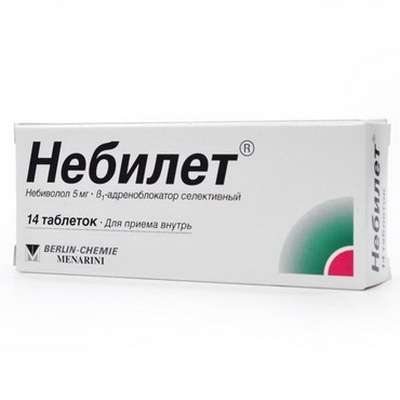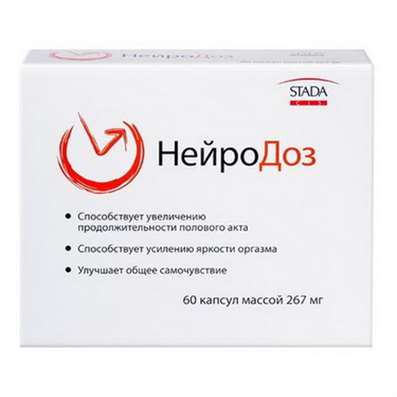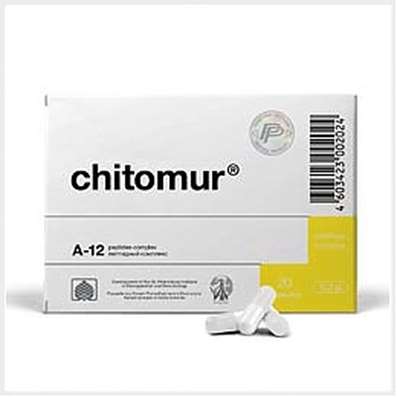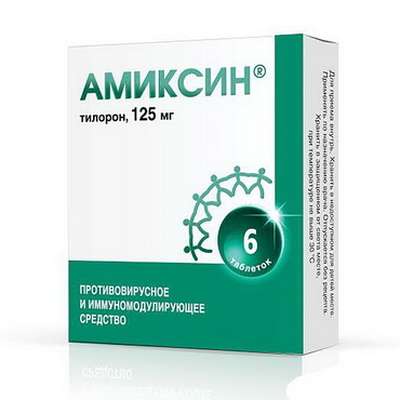Noopept – Instructions, Side Effects, Review
16 Jan 2017
Trade name of the drug: Noopept
Chemical name: ethyl N-phenylacetyl-L-prolylglycine
Pharmacotherapeutic group: nootropic agent.
Pharmachologic effect of Noopept
Noopept has nootropic and neuroprotective properties. It improves learning ability and memory, working on all phases of processing: the initial processing of information, consolidation, extraction. Prevents the development of amnesia induced by electric shock, blockade of central cholinergic structures glutamatergic receptor systems, deprivation of paradoxical sleep phase.
Neuroprotective (protective) action Noopept is to increase the stability of brain tissue to damaging influences (trauma, hypoxia, electroconvulsive, toxic) and the weakening of the degree of damage to brain neurons. The drug chamber to reduce the volume of thrombotic stroke models and prevents neuronal death in the tissue culture of cerebral cortex and cerebellum, subjected to the action of neurotoxic glutamate concentrations, free-radical oxygen.
Noopept has an antioxidant effect, an antagonistic effect on the excess calcium effects, improves the rheological properties of blood, possessing anti-aggregation, fibrinolytic, anticoagulant properties.
Nootropic drug effect is associated with the formation of cyclo-prolylglycine similar in structure to endogenous cyclic dipeptide possessing anti-amnestic activity, and the presence of choline positive action.
Noopept transcallosal increases the amplitude of the response, facilitating associative links between the hemispheres of the brain at the level of cortical structures.
It helps restore memory and other cognitive functions, disturbed as a result of the damaging effects - brain trauma, local and global ischemia, prenatal damage (alcohol, hypoxia).
The therapeutic effect of the drug in patients with organic disorder of the central nervous system is manifested starting with 5-7 days of treatment. First implemented in the existing spectrum of activity Noopept anxiolytic and stimulating light effects, manifested in the reduction or disappearance of anxiety, irritability, affective lability, sleep disorders. After 14-20 days of therapy revealed a positive effect of the drug on cognitive function, attention and memory options.
Noopept has vegetative normalizing effect, reduces headaches, orthostatic disorders, tachycardia.
When you remove the drug is observed withdrawal.
It does not have a damaging effect on the internal organs; It does not lead to a change in the cellular composition of the blood and biochemical parameters of blood and urine; has no immunotoxic, teratogenic, does not exhibit mutagenic properties.
Pharmacokinetics
Ethyl N-phenylacetyl-L-prolylglycine, absorbing in the gastro-intestinal tract unaltered enters the systemic circulation, penetrates the blood-brain barrier, the brain is determined in large concentrations than in the blood. Time to maximum concentration is on average 15 minutes. The half-life of blood plasma -. 0.38 h partly preserved in unchanged form, is partially metabolized to form a phenyl-acetic acid, phenyl-atsetilprolin and cyclo-prolylglycine. It has a high relative bioavailability (99.7%), not accumulates in the body, it does not cause drug dependence.
The rhythm of modern life requires processing huge amounts of information that creates a substantial burden on the brain. Our body - a product of evolution, rather than a biological analogue of a computer, so the brain can not sustain high activity 24 hours a day, 365 days a year. How can we use science to protect your brain from overloading and simultaneously improve its function? After all, no matter how great was the desire to unwind and relax, often we are faced with very different objectives: to increase the pace of implementation of the work, pass the session, learn a foreign language.
About mental problems
The range of conditions in which there are violations of basic cognitive functions (attention, memory, the ability to analyze the situation and decision-making, spatial orientation) is very broad. It includes cognitive deficits in stroke and chronic cerebrovascular disease, brain injury, cerebral lesions of various chronic neurodegenerative nature neuroinfections, posthypoxic encephalopathy, chronic alcoholism, mental retardation in children. The prevalence of cognitive pathology, as well as the diversity of its individual manifestations in different people dictate the need to expand the arsenal of substances, normalizes impaired cognitive function. Lack of mnemonic functions that occurs on a background of neurotrauma, stroke, senile vascular disorders and neurodegenerative nature occurs on the background of pronounced structural changes in the brain tissue. For the treatment of these conditions it is advisable to use products that combine with neuroprotective nootropic activity. However, most of neuroprotective substances currently used in medical practice (antioxidants, calcium channel antagonists), devoid of a direct positive effect on mnemonic function. Cerebral vasodilators, which are also widely used, cause the effect of "robbing" brain tissue expressed by general hemodynamic changes, which may lead to a deterioration of cognitive activity, especially in the elderly.
Noopept - innovative drug dipeptide structure, with extensive nootropic and neuroprotective properties.
The main effect Noopept established in clinical trials
Nootropic (improves cognitive function)
Anxiolytic (reduces anxiety and irritability)
Wegetotropona (including, and normalization of sleep)
ANTI-asthenic
Nootropic action
Mechanism:
effect on specific binding sites in the cerebral cortex
education cyclo-prolilglicin similar in structure to endogenous cyclic dipeptide possessing antiamnestic activity
availability choline positive action
increase in brain concentrations of neurotrophic factors (NGF, BDNF)
Therapeutic effect:
improves memory, operating at all phases: the initial information processing, storage and playback
It helps to restore memory and other cognitive functions, disturbed as a result of damaging effects (neurotrauma, local or global ischemia)
It facilitates learning processes, improves concentration, stimulates intellectual activity
neuroprotection
Mechanism:
the weakening of the neurotoxic effect of glutamate
opposition to the accumulation of intracellular calcium
reduce the formation of free radicals
It has anti-inflammatory effect. Therapeutic:
increases the resistance of brain tissue to damaging influences (neurotrauma, hypoxia, electroconvulsive, toxic)
weakens the degree of damage to the neurons in the brain
Noopept EFFECTS IN THE EXPERIMENT:
Nootropic - impact on the ability to learn; Memory (acting on all phases: initial processing of information, consolidation and retrieval); facilitation of synaptic transmission at the level of the cerebral cortex
Antiamnestic neuroprotective - improving the stability of brain tissue to damaging influences
Anxiolytic - reducing feelings of anxiety, emotional tension
choline positive
The antithrombotic (anticoagulant effect without having an antiplatelet action)
INDICATIONS for Noopept
Violations of memory, attention and other cognitive functions, and emotionally labile disorder (including elderly patients) when:
consequences of traumatic brain injury
commotion syndrome
cerebral vascular disease (encephalopathy different genesis)
asthenic disorders
other conditions with symptoms of decline of intellectual activity
DOSAGE AND ADMINISTRATION of Noopept
Noopept applied inside after eating. Treatment starts with the drug in a dose of 20 mg, 10 mg distributed into two doses during the day (morning and afternoon). In case of insufficient efficacy and good tolerability of the drug dose NOOPEPTA increased to 30 mg, 10 mg distributed on three stages throughout the day. Like most nootropics, it is not recommended to take Noopept later than 18 hours. The duration of a course of treatment is 1.5 - 3 months. Repeated treatment may be carried out after 1 month if necessary.
INTERACTION of Noopept
Not applicable Noopept interaction with alcohol, drugs and antihypertensive drugs and drugs stimulating effect.
ADVANTAGES of Noopept
Innovative nootrop of peptide structure:
- For the first time high resistance to intestinal neuropeptide preparation of enzymes and possibility of oral
- In the body forms an active metabolite that is identical to the endogenous dipeptide with nootropic activity
- Metabolized, bypassing the liver, with the formation of endogenous metabolites
- Very low effective doses (20 mg / day)
A wide spectrum of therapeutic action: nootropic, neuroprotective, anxiolytic, vegetostabiliziruyuschy et al.
The effectiveness of piracetam Noopept exceeds that found in clinical studies in patients with vascular cognitive impairment and post-traumatic genesis
It has a more pronounced compared with piracetam, anti-astenic, anti-anxiety effects and helps normalize sleep
The favorable safety: the incidence of side effects when taking Noopept twice lower than when receiving piracetam
Sold in pharmacies without a prescription
Noopept – a new Era of Nootrops
Specifically, in order to protect the brain from a variety of acting on it unfavorable factors and to avoid "overheating", designed drugs called nootropics. Nootropics (Greek noos - thinking mind;. Tropos - direction) have a specific positive impact on higher integrative brain function, resulting in the improvement of mental activity, stimulation of cognitive function, learning and memory, enhance brain resistance to damaging factors, including extreme pressure and hypoxia.
Noopept - nootrop innovation, developed by Russian scientists, helps the brain to better adapt to the damaging effects and other adverse factors, worsening memory, attention and learning ability. Action Noopept physiological for the body, because based on the formation of the active compound with a complex called cyclo-prolilglicin, that is present in our brain. That this substance is also called "peptide memory."
The drug also has a vegetative-normalizing effect, ie reduces the headaches, dizziness, palpitations, helps normalize sleep and get rid of irritability and emotional lability.
Noopept action mechanism is aimed at all the main memory cells - primary processing, storage and retrieval of information. But do not be surprised if the doctor will prescribe Noopept someone from your family: the drug helps improve brain function due to deterioration of blood supply in the elderly, as well as cope with the effects of traumatic brain injury and stroke, asthenic disorders and autonomic disorders.
Official indications for use:
Violations of memory, attention and other cognitive functions, and emotionally labile disorder, including elderly patients, with:
- the consequences of traumatic brain injury
- commotion syndrome
- cerebral vascular disease (encephalopathy different genesis)
- asthenic disorders
- other conditions with signs of reducing intellectual productivity
Pregnancy, lactation. Age up to 18 years. Hypersensitivity to the drug. Lactase deficiency, lactose intolerance, glucose-galactose malabsorption. Expressed human liver and kidneys.
Scheme of Noopept application is simple and easy: 1 tablet (10 mg) x 2 times a day (morning and afternoon). It is important to emphasize that to achieve the full effect of taking the drug should be carried out a course (of at least 1.5 months = 2 packages), since restoration "work" for the brain will take some time Noopept like "teaches" the brain to work in the new regime.
It is important that the end of the reception Noopept does not require a gradual reduction of the dosage: the drug simply canceled - and all. Noopept not enter into interactions with alcohol, drugs and antihypertensive agents, agents stimulating effect.
"Remembrance - it is the means by which we will record and store information about past events in order to take advantage of it in the present."
Among the things and events that we remember, are stored not only our knowledge (acquired in school, college), but personal memories (a first date, wedding, birth of children), as well as our habits and skills. To achieve this, we need to code or process, the information that we want to remember, and to lay it in storage, and then retrieve the memories or skills in response to a stimulus or a key command. That is, there are three main mechanisms of memory: storing (or coding), storage and playback (or extract). If you breach any of these stages, memory loss will occur.
For the duration of securing and preserving the memory of the material is divided into short-term, rapid and long-term.
Short-term memory is characterized by very short persistence of perceived information, the amount of memory in each individual. It characterizes the natural person's memory and remains, as a rule, throughout their lives. The volume of short-term memory is primarily characterized by the ability to mechanically, ie. E. Without the use of special techniques, to memorize information perceived. The value of short-term memory is great: it is it allows you to immediately weed out irrelevant information and keep potentially useful. Short-term memory can be compared with racks in a large library: books that are taken from them, then put back depending on immediate needs. Long-term memory is more like a museum: there are certain elements selected from short-term memory, divided into a plurality of columns, and then stored more or less long time. But it should be noted that the short-term memory is not possible without the normal functioning of the long-term.
Memory allows you to store current information needed to perform a particular action; Storage duration determined by the time the present action. When transferring information from short-term memory in the operational happens its selection on criteria defined by the specific task that person decides.
Long-term memory is able to store information for a long, practically unlimited period of time (this period is limited only by the time a person's life). The information which has appeared in the long-term memory storage can be played any number of times a person, without forgetting it. Moreover, repeated and systematic use (reproduction) of this information only strengthens its traces in the long-term memory. Long-term memory allows a person's ability to recall at any time that he needs. When using long-term memory to recall often require thought and effort of will.
Good memory - the dream of many and are often the basis for success in life. It is the memory of a particular distinctive feature of the human brain allows a person to learn and improve. The accumulated experience in the memory helps to find the correct solution to the problem in a given situation.
But not always enough just to have a good memory, it is important to use it and be able to train properly for effective memorization there are so-called laws of memory.
Memory Laws
Interest Lae: Act easier to remember interesting interpretation: the more aware of memorized information, the better it will be remembered
Installation law: if a man gave himself the installation remember information, memorization is easier to happen
The law of action: information, participating in activities (ie, if in practice the use of the knowledge takes place) is best remembered
The law context: when associating information with familiar concepts of new absorbed better
Deceleration law: the study of similar concepts observed effect of "overlap" old new information
Act optimal length series: length number memorized for better memorization should not greatly exceed the volume of short-term memory
Kray Law: best remembered information provided at the beginning and at the end
The law of repetition: it is best to remember information that was repeated several times
The law of incompleteness: best remembered uncompleted actions, tasks, unsaid phrases, etc.
Causes of memory loss
Violation of memory - a serious disease, which has its symptoms and methods of treatment. According to statistics, memory problems are concerned almost every fourth inhabitant of the Earth. The causes of memory problems are many, one of them (but not only!) Is the natural aging process, which provokes benign senile forgetfulness ". But we must not think that memory impairment - the inheritance only older people, even very young people may be faced with memory disorders.
The causes of memory impairment may be:
Stressful situations, prolonged depression, long-term concern. The more you are worried and nervous, the weaker becomes your memory. This is especially true of the older generation, who because of their age often begin to worry about trifles
Lack of sleep and chronic fatigue. Get enough sleep (at least 7-8 hours) is an integral part of the human life cycle, it is during sleep the brain sorts and stores the resulting information for the entire day. Frequent lack of sleep, and as a consequence of chronic fatigue leads to distraction, irritability and memory impairment
Bad habits: regular consumption of alcoholic beverages and smoking. Abusing alcohol, you not only reduce your memory, but also are contributing to reduction of the intellect and the subsequent development of dementia. Initially, memory impairment can occur sporadically, you stop to remember what is happening at the time of alcohol consumption. Gradually, the memory begins to deteriorate still more, a slowing of thought processes and reduces the speed of perception. Smoking also weakens the function of memory, especially short-term, at the same time affecting verbal and visual memory
Deficiency of certain vitamins (C, E, B6, B12, etc.), amino acid and nicotinic folic shortage. All these elements are necessary for the body to full activity of the central nervous system. Their insufficient damages brain cells, which means that the whole work suffers brain
The use of stimulants. Once upon a time, in order to "whip up" the brain, for example during the preparation for the exam, it was popular to mix the "horse" dose of coffee with "soda". Now almost every corner you can see the energy and tonics. This incentive may give a small short-term effect, but the consequences for the organism, especially with regular use, can be very sad
Metabolic disorders, diseases of internal organs (kidneys, liver, lungs, etc.), infectious diseases (encephalitis, meningitis)
Head injuries - concussion, bruising and hemorrhage (stroke) will sooner or later lead to problems with memory
Diseases of the cardiovascular system, including increased blood pressure accompanied by a deterioration of brain perfusion. This is - one of the most common causes of memory impairment in the elderly.
What is the brain and how it works
The brain - the most important organ, which is responsible for the regulation of all vital functions of the body. Our thoughts, feelings, emotions, desires, speech, memory, too, depend on the functioning of the brain.
Central nervous system (CNS) consists of the brain and spinal cord. Brain, in turn, consists of nerve cells - neurons, which are interconnected by synaptic connections. Thanks to these connections the brain controls vital functions of the body. The bodies of nerve cells forming the cortex or gray matter, and the processes of nerve cells - the nerve fibers - white substance. The cerebral cortex has convolutions and furrows, due to which its surface area increases significantly.
Mass brain of a newborn baby is about 300 g, while an adult - 1.1-1.9 kg.
Brains were divided into left and right hemisphere, each of which consists of four parts: the frontal, temporal, parietal and occipital.
The right hemisphere is responsible for the left half of the body, and the left - for the right. Each of them has its own record of information occurs. The right hemisphere is responsible for creative, synthetic, emotional perception. The left hemisphere of the same stores verbal (verbal) memories. This brain logic, abstract constructions, analytical conclusions.
More look at the proportion of the cerebral hemispheres.
The occipital lobe is located in the rear part of the brain processes the incoming visual information and recreates all of the images that we see.
Temporal lobe - processes the information coming into the brain through the organs of hearing, and at the occipital lobes helps determine what we see. This part of the brain associated with memory: the right share, usually works with visual information, the left - with the verbal. Finally, the converted word in the left temporal lobe of speech sounds, and we understand that we are talking about.
Parietal lobe has two main functions. First, here it is processed all the information about the tactile and pain. Secondly, this area is associated with the analysis of visual data, helping to understand what we see. This fraction brain stores map of the body surface, so that each of touch information supplied in its own area for processing.
Frontal lobe controls the additional features that are inherent in the person's name. Often referred to as the organizing functions and treat them concentration, planning, reasoning and judgment - skills, aimed at the adoption of complex solutions and find a way out of the problems. The large area of the frontal lobe is reserved for sending signals to the muscles of the body, telling them to move when needed. Frontal lobe is associated with the limbic system and the control of human behavior in different situations.
One should not forget about such an important property of the brain, as plasticity. Plasticity (or neuroplasticity) - it is the brain's ability to change and adapt as a result of the experience gained. There are functional plasticity, which is the ability to pass the damaged area of the brain functions to other areas intact. And structural plasticity, when the brain is able to change its physical structure as a result of training.
Thus, plasticity allows the person not only to better adapt to the environment, but to coordinate the learning process, ie, consciously influence on the formation of useful new neural connections.
FAQ about Noopept
Q. Can I take Noopept if I have meteopathy?
A. You can use Noopept to improve memory, reduce anxiety, normalization of sleep and increase resistance to external factors that can contribute to reducing the manifestations meteopathy and better tolerability weather changes your body.
Q.C an I get used to Noopept if I take it for long?
A. Studies have found that Noopept not cause drug dependency (it can not be used) and withdrawal (reception can be stopped at any time).
Q. Can I use Noopept after mixed stroke, and if there were epileptic seizures?
A. Noopept indicated for the treatment of vascular cerebral insufficiency, including patients after stroke. Data on adverse effects on Noopept epilepsy absent and the clinical experience of its good tolerability and efficacy in these patients.
Q. Is it possible to use of the drug during pregnancy or lactation?
A. During the experimental data set Noopept lack of teratogenic, mutagenic and immunotoxic properties. However Noopept not been studied in women during pregnancy and lactation, so it is not indicated for use in these cases.
Q. Can I use Noopept children to improve learning?
A. Noopept registered for use in people older than 18 years, given the low level of toxicity of a number of studies is planned, which would allow to register Noopept children.
Q. What is neuroprotection action of Noopept?
A. Neuroprotective (protective) action Noopept is to increase the stability of brain tissue to damaging influences (trauma, hypoxia, electroconvulsive, toxic effects, and others.) And a decrease in the degree of damage to the neurons in the brain.
Q. Can Noopept used in vegetative-vascular dystonia?
A. Noopept has vegetative normalizing effect, reduces headaches, orthostatic disorders, tachycardia, and can be used for memory impairment in patients with vascular dystonia.
Q. Can Noopept taken with the use of alcoholic beverages, if necessary?
A. The use of alcohol does not influence the effects and Noopept metabolism in the body, together with the neuroprotective properties Noopept increase resistance to brain tissue damaging action of toxic substances, including alcohol.
Q. How often can I repeat the treatment Noopept?
A. The duration of the Noopept depends on the nature of the disease, it is usually recommended course of 1.5-3 months, which may be repeated after a month's break.
Q. For What cognitive function influence Noopept?
A. Application Noopept improves cognitive functions such as memory, language, gnosis (the perception and processing of information), praxis (use of motor skills).
Q. Can Noopept cause headaches?
A. Noopept has vegetative-normalizing action, which leads to a decrease in headaches resulting from autonomic dysfunction.
Q. Can Noopept raise arterial blood pressure?
A. When receiving Noopept in patients with hypertension, mostly of III degree, and receiving inadequate antihypertensive drugs can be observed rise in blood pressure.
Q. The chemical name of the active substance is present glycine. What is the difference noopept from glycine product, he is better than?
A. Noopept has a peptide structure - composed of amino acids and glycine, along with in the Noopept includes the amino acid proline, together they form the human body connection cyclo-prolylglycine, has a pronounced effect on memory function. Also unlike Noopept glycine has vegetative normalizing effect (reduces headaches, orthostatic disorders, tachycardia), and administered orally, whereas glycine and digested in the intestine is not absorbed.
Q. Can we take together Noopept other psychotropic drugs?
A. Noopept has no drug interactions and is compatible with other centrally acting drugs.

 Cart
Cart





